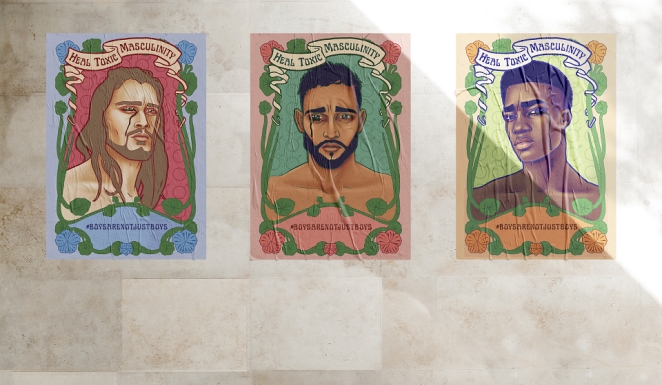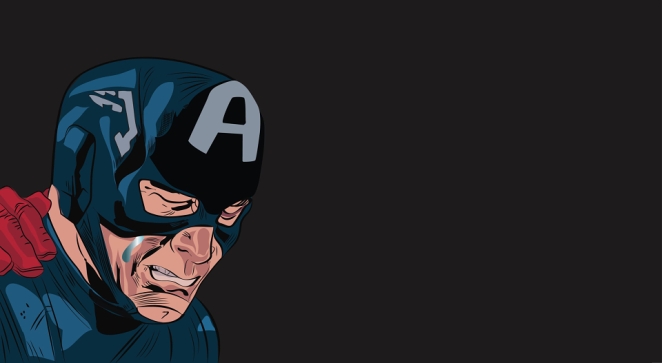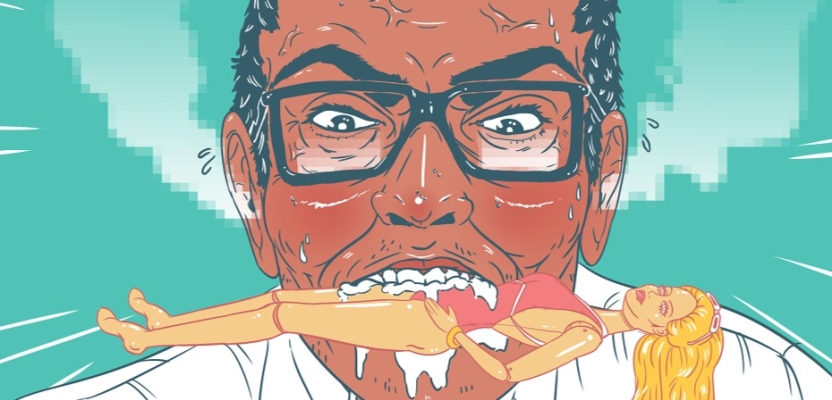There’s been a cultural shift weaving its way into our culture in recent years and, while there are always going to be those pushing against it, for the most part it’s one that’s been rightly welcomed with open arms.
The re-evaluation and reframing of traditional gender roles is something that’s needed to happen societally for decades now and one of the side effects of this shift appears to be the slow death of toxic masculinity.
As we celebrate Mental Health Month, we’ll be exploring how the creative industries have played a role in promoting healthier attitudes towards masculinity, mental health, and overall well-being, eradicating the spectre of toxic masculinity and leaving a healthier, more balanced world in its wake.
The Toxic Conundrum
Toxic masculinity is a term typically used to describe a set of cultural norms and expectations that can be detrimental to both men and society as a whole. We’re talking all the classic “strong man” traits like stoicism, emotional suppression, dominance, and aggression, as well as a discouragement of vulnerability and emotional expression. Historically, these ideals have been prevalent across western culture. Just look at Clint Eastwood.
Historically, we’ve not helped, as creative works have long been dominated by stereotypes of the tortured, brooding artist or the ruthless, cutthroat businessman. These stereotypes often perpetuate toxic masculinity by glorifying unhealthy behaviours and stifling authentic expression. However, in recent years, the creative industries have witnessed a significant transformation driven by a more inclusive and empathetic approach and few are mourning the death of the old ways.
Breaking Stereotypes Through Art
Art has a unique power to challenge and reshape societal norms and many recent artists, both established and emerging, have used their creativity as a tool to break free from traditional notions of masculinity and inspire change. Even in the mainstream music industry artists like Frank Ocean and Harry Styles have worked to defy conventional gender expectations through their music and fashion choices, demonstrating that strength can coexist with vulnerability and sensitivity.
The film industry has seen a shift towards more nuanced portrayals of male characters. Films like "Moonlight" and "Call Me by Your Name" explored themes of masculinity, identity, and love in ways that challenge the traditional masculine narrative, offering a fresh perspective on the complexities of being a man. And then the're "Barbie" of course... enough said.

Ida Hay
The visual arts have also seen a surge in artwork that addresses mental health and emotional well-being. Artists are using their talents to depict the human experience with all its intricacies, promoting discussions around mental health that were once considered taboo. This openness and vulnerability is helping to slowly erode the stigma surrounding mental health issues in society, to the extent it’s now actively encouraged in many creative workplaces for employees to be open about their mental health.
Diversity and Inclusion
Another crucial factor in the transformation of the creative industries is the push for greater diversity and inclusion. As the industry becomes more representative of different backgrounds, genders, and perspectives, it naturally becomes less dominated by traditional masculine role models. Diverse voices bring fresh ideas and challenge the status quo, leading to more inclusive narratives and creative outputs.
This push for diversity and inclusion has extended to behind-the-scenes roles as well. More women and non-binary individuals are entering positions of power and influence in the creative industries, leading to changes in how decisions are made and narratives are shaped. Just look at the recent success of The Last of Us and actress Bella Ramsey, who is defiantly open about their non-binary status in a way that doesn’t feel contrived or media bating; it’s just who they are! This shift is promoting a more equitable and creative environment for everyone and long may it continue.
Mental Health and Creativity
Creativity has long been associated with mental health, and the creative industries have played a significant role in destigmatizing mental health issues. Artists often use their work as a form of therapy, channelling their emotions and experiences into their creations. This process can be cathartic and healing, both for the artist and the audience.

Devika Lamba
The creative industries have increasingly become advocates for mental health awareness. Celebrities, artists and influencers are openly speaking out about their struggles with mental health issues, helping to reduce the stigma surrounding these conditions and the world of advertising is finally starting to acknowledge the mental health crisis bubbling under its surface.
Challenges and Resilience
While the creative industries have made significant strides in combating toxic masculinity and promoting mental health awareness, challenges remain. The pressure to conform to traditional gender norms and expectations still exists, and artists often face criticism and backlash when they deviate from these norms. Toxic masculinity, in some form, persists in various corners of the creative world.
However, artists and creators have shown incredible resilience in the face of these challenges. They continue to push boundaries, challenge stereotypes, and advocate for a more inclusive and empathetic creative landscape. As a result, the tide is slowly turning, and the creative industries are becoming more welcoming spaces for diverse voices and expressions of masculinity.
Have we Killed it?
Has creativity killed toxic masculinity then? While the battle is far from over, there is no doubt that creativity has played a pivotal role in challenging traditional gender norms and promoting mental health awareness. Artists and creators have used their talents to break free from toxic masculinity, inspire change, and encourage open conversations about mental health.
As we celebrate Mental Health Month, we must acknowledge the progress made and continue to support and champion those who use their creativity to make the world a more inclusive, empathetic, and mentally healthy place. Because if we don’t do it, who else will?




